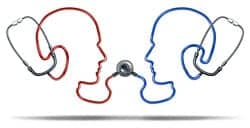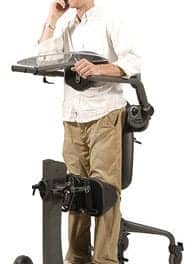A new report released by The University of Texas Health Science Center at Houston and TIRR Memorial Hermann, Houston, chronicles some of the post-Hurricane Ike challenges experienced by the estimated 30,000 Houstonians with severe disabilities who sheltered in place or were evacuated after the September 2008 storm, according to a [removed]statement[/removed] from the university.
When the hurricane knocked out the power to Kathleen DeSilva’s ventilator at her house in the Heights, a gasoline-powered generator was all that was keeping her alive. And like many Houstonians, her relatives had a hard time finding gas during the 2 weeks she was without electrical service,
DeSilva’s husband, Peter Simmons, who also has a spinal cord injury, was quoted in the statement as saying that the couple had some close calls at first when gas was hard to find.“Sometimes, we only had a couple of hours of gas left, he added.
Hurricane Ike caused serious problems for Houstonians with disabilities such as DeSilva and her husband of 25 years.
The report is based on a community outreach project coordinated by Lex Frieden, professor at The University of Texas School of Health Information Sciences at Houston and senior VP at TIRR Memorial Hermann. and UT School of Health Information Sciences colleague Kim Dunn, MD, PhD, to help people with severe disabilities in the Greater Houston area affected by Hurricane Ike.
The Gulf Coast Hurricane Ike Relief Fund through the Greater Houston Community Foundation provided $191,000 for the project, which received additional support from TIRR Foundation, the Christopher and Dana Reeve Foundation, United Spinal Association and numerous other organizations and individuals, says the statement.
Millions of people in the Houston area were without power as a result of Hurricane Ike—many for weeks. Frieden said in the statement that people who need electricity to power ventilators, chemo pumps, home dialysis machines, and wheelchairs were placed in life-threatening circumstances.
There were other issues, too. He said further that some people lost their homes and transportation. Some were separated from personal care attendants and providers of medical services. Others ran out of medication or lost their ability to live independently because they lost everything and had to move to another location, he added.
A team organized by the faculty members called nearly 28,000 people who were either registered with the METROLift public transportation program or who had enrolled in the 2-1-1 Transportation Assistance Registry program. Of those individuals, 843 needed extra help filing claims with the Federal Emergency Management Agency, getting around, refilling prescriptions, and other services.
Frieden said that one woman who was visited by a project staff member was found on the floor next to her refrigerator so she could easily access her food supply, She was given a power chair. A ramp was constructed. And food delivery arrangements were made, he added.
A generator and fuel were delivered to a woman who was charging her wheelchair at a McDonald’s restaurant for 8 hours a day, he said in the statement.
The information generated by the project is being used to produce a disaster assistance pamphlet with specific and practical information for people with disabilities, Frieden said. The pamphlet and other useful information will be available on www.disability911.com.
The team also contacted people with disabilities at an American Red Cross shelter.
Dunn said in the statement that many problems could be avoided by making medical records available electronically. This way, records could be accessed anytime regardless of whether the person sheltered in place or evacuated, she added. By providing assistance at a Red Cross shelter, it was clear that there was a critical need to support the continuity of health care information in a crisis situation, she said.
Dunn is working with primary care physicians to develop an emergency preparedness plan for their patients with disabilities.
For DeSilva, who broke her neck in a gymnastics accident when she was in high school, the ordeal began as Ike laid siege to the city’s power lines. The power was going on and off and it was tripping the alarm on the ventilator, she said in the statement. I bet the alarm went off 10 to 15 times that morning before the power finally went off for good, added DeSilva, who was the chief counsel for TIRR (now TIRR Memorial Hermann) for more than 20 years.
Simmons added: As bad as that sounds, it was nothing compared to the next 2 weeks that followed. Simmons was permanently injured in a 1978 motorcycle accident, said the statement. During the outage, relatives had to tote about 200 gallons of gasoline to the couple’s home, he said. In addition, the couple’s caregivers had to refuel a hot generator in the middle of the night with only flashlights to see.
The couple has since purchased a natural gas generator, which will kick in within 10 seconds of a power disruption. DeSilva said the couple was fortunate to have family nearby to help them. In a disaster, you realize how important others are. Hurricane Ike was certainly a challenge for a person with a disability, she added.
[Source: [removed]University of Texas[/removed]]




